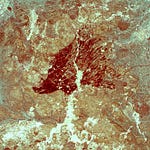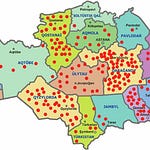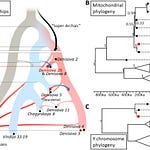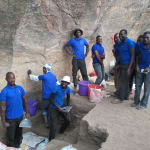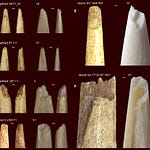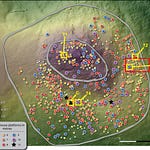For decades, the story of Sumer—the world’s first urban civilization—has been told as one of rivers, irrigation, and ingenuity. It begins with the Tigris and Euphrates winding across a flat Mesopotamian plain, nourishing the fields of early farmers who would one day invent writing, law, and monumental architecture.
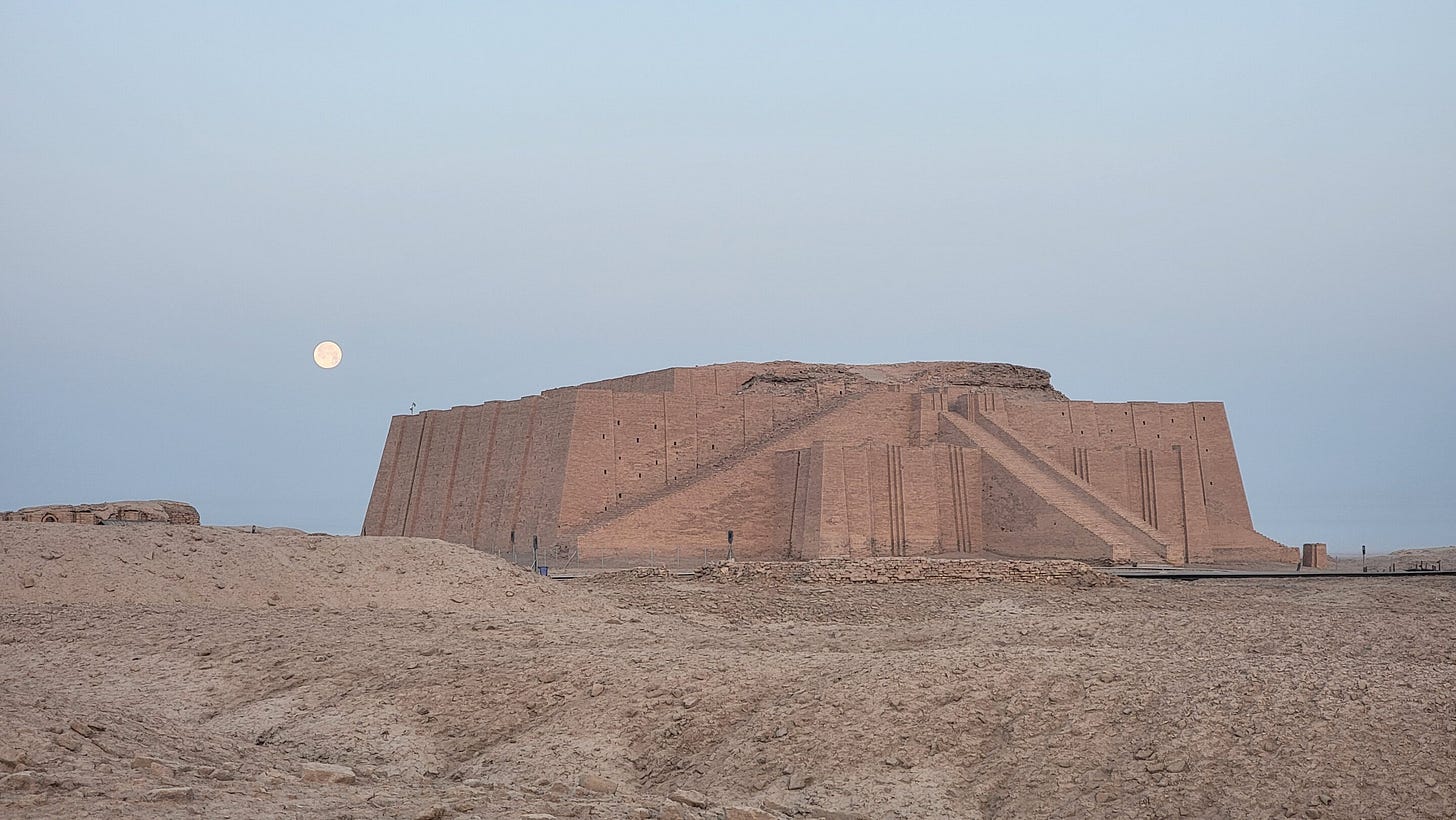
But a new study published in PLOS One1 suggests the reality was far stranger. Southern Mesopotamia, it turns out, was once a tidal world. The ancestors of Sumerian city-builders were not just farmers on a floodplain. They were navigating a restless delta where rivers met the sea and tides surged inland twice a day, pushing freshwater deep into what is now Iraq.
“Sumer was literally and culturally built on the rhythms of water,” said Liviu Giosan, senior scientist emeritus at Woods Hole Oceanographic Institution and lead author of the study. “The cyclical patterns of tides together with delta morphodynamics were deeply woven into the myths, innovations, and daily lives of the Sumerians.”
A World of Shifting Shores
Between 7,000 and 5,000 years ago, the Persian Gulf reached much farther inland. Where later generations would plow dusty fields, early Neolithic farmers lived in a tidal estuary. Short canals connected tidal creeks to plots of land. Twice a day, the incoming tide brought fresh water to irrigate fields and date groves without the need for vast infrastructure.
The tidal rhythm provided stability. Then, slowly, the delta began to build outward as sediment from the Tigris and Euphrates pushed the coastline farther from the interior. The dependable tides receded.
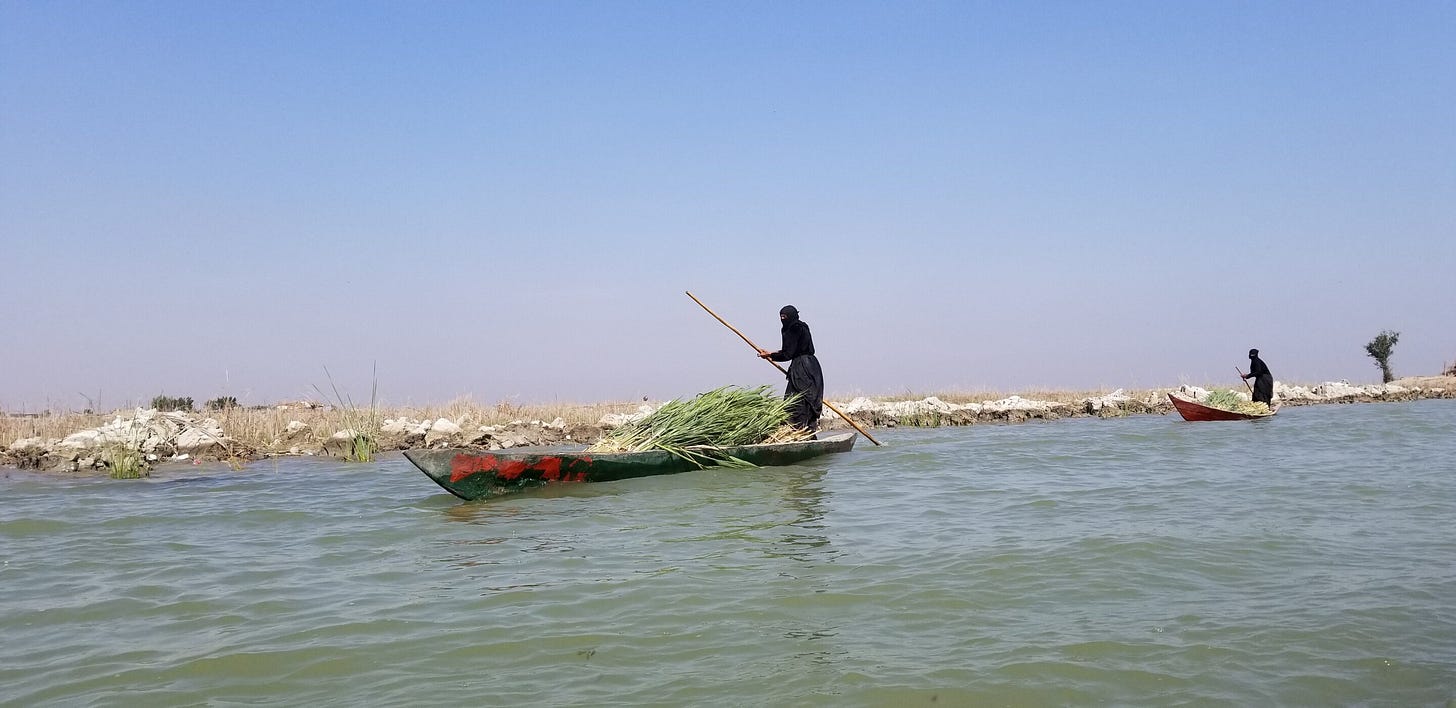
When the tides disappeared, so did the easy irrigation system. Farmers faced a crisis. Maintaining agriculture now required digging extensive canals and embankments, coordinating labor on a scale never before seen. The environmental shift was not just a nuisance—it was the crucible for social transformation.
“We often picture ancient landscapes as static,” said Reed Goodman, co-author and environmental archaeologist at Clemson University. “But the Mesopotamian delta was anything but. Its restless, shifting land demanded ingenuity and cooperation, sparking some of history’s first intensive farming and pioneering bold social experiments.”
The Birth of Cities and the Rise of Inequality
The response to this hydrological upheaval was monumental. Canals stretched across the plains. Temples became managers of water and labor, consolidating political and religious power. From these projects emerged the first true city-states—Uruk, Ur, and Lagash—and with them, the hallmarks of urban civilization: centralized authority, class hierarchies, and written record-keeping.
Flood myths echo these transformations. The water-centered Sumerian pantheon—Enki, god of wisdom and freshwater; Enlil, god of wind and storms—may preserve memories of a world in which tides dictated survival.
“The radical conclusions of this study are clear in what we’re finding at Lagash,” said Holly Pittman, director of the Penn Museum’s Lagash Archaeological Project. “Rapid environmental change fostered inequality, political consolidation, and the ideologies of the world’s first urban society.”
A Lesson for Today
The study underscores an unsettling reality: the first cities were born from an environmental crisis. When the natural irrigation of tides ended, humans had to build an artificial one. The effort produced civilization—but also entrenched inequality and ecological vulnerability.
“Our work highlights both the opportunities and perils of social reinvention in the face of severe environmental crisis,” Giosan noted. “Beyond this modern lesson, it is always surprising to find real history hidden in myth—and truly interdisciplinary research like ours can help uncover it.”
As modern cities confront rising seas and shifting climate zones, the story of Sumer offers both a warning and a paradox. Civilization, it seems, has always been built on unstable ground.
Additional Related Research
Here are closely related studies that complement this research:
Altaweel, M. (2021). "Water, Society, and Ancient Urbanism: Hydrological Change and Resilience in Mesopotamia." Journal of Archaeological Research, 29(3), 321–359. https://doi.org/10.1007/s10814-021-09154-2
Pournelle, J. R. (2003). "Marshland of Cities: Deltaic Landscapes and the Evolution of Early Mesopotamian Civilization." PhD Dissertation, University of California, San Diego. [Available via ProQuest]
Hritz, C. (2010). "Tracing Settlement Patterns and Channel Systems in Southern Mesopotamia Using Remote Sensing." Journal of Field Archaeology, 35(2), 184–203. https://doi.org/10.1179/009346910X12707321358964
Wilkinson, T. J. (2003). Archaeological Landscapes of the Near East. University of Arizona Press.
Giosan, L., & Goodman, R. (2025). Morphodynamic foundations of Sumer. PloS One, 20(8), e0329084. https://doi.org/10.1371/journal.pone.0329084



